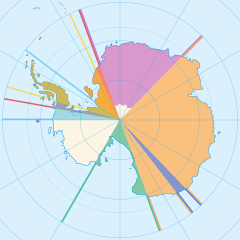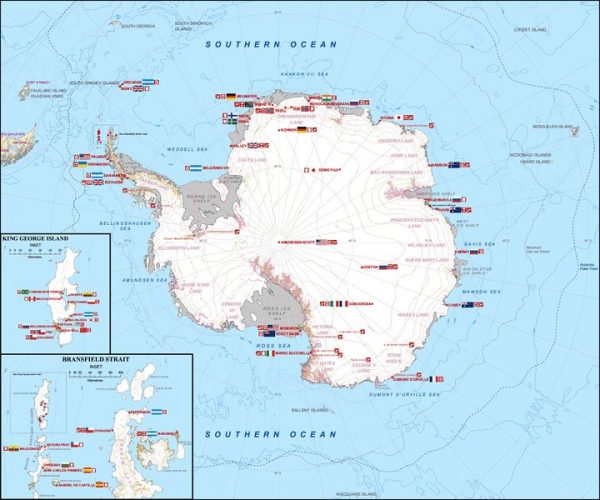From Antarctica to the Moon
In episode 114 of the NASA podcast “Houston, We Have a Podcast” airing on October 18, 2019, Samuel Lawrence, a scientist in charge of lunar exploration, says that NASA is considering the idea of establishing an outpost on the moon. What was once the realm of science fiction may soon become a reality. As we build up our presence on the moon we must ask: how can we protect this landscape for future generations to study? As a remote and hostile environment, an outpost on the moon would require substantial infrastructure to maintain and sustain life. The moon doesn’t have an environment that would protect our presence there naturally. This means that we must be extra vigilant to conserve the lunar environment like we do other public lands. The Antarctic Treaty treats Antarctica, another remote and difficult environment, as akin to public lands, a kind of commons to be managed jointly by various nations. At the northern tip of the planet, science and conservation have been driving forces behind management decisions. Thus, it provides a historical blueprint for ideas that could be tried on the moon.
The Early Years in Antarctica: 1950-1958

In 1950, scientists met over a dinner conversation in Maryland and got to talking about the benefits of joint research, a lack of funds, and what to do with a landmass that hadn’t been touched by humanity for the past thirty-nine years. From these conversations came the idea to implement the International Geophysical Year – a time of increased scientific research not just in Antarctica, but around the world.[1] In 1955, scientists and politicians called a planning convention, uniting countries from across cold war battle lines to finalize the details.
In 1957, the International Geophysical Year kicked off. A number of research bases were set up during the negotiations surrounding the Geophysical Year. A US-run base sat at the physical South Pole – the farthest southern point. The USSR established a facility at magnetic south – where a compass will point. These bases began to investigate climate science and the atmosphere, among other research. After the International Geophysical Year ended, scientists wanted to continue researching collaboratively, and the issue of who owned Antarctica still wasn’t solved.
In response, the countries that participated in the International Geophysical Year developed the 1959 Antarctic Treaty.[2] Other countries would join later, and the treaty was amended several times. The Antarctic Treaty terminated all territorial claims that nations had made to the continent and opened Antarctica for international scientific research. This collaborative approach still governs current scientific research on the continent to this day.[3] However, the treaty is not perfect. It has excluded certain countries, especially those in the Southern Hemisphere.[4]
Recent Impacts on the Region
More recently, a lot of the larger pieces of infrastructure, such as roads and landing strips, are made of ice or packed snow. Both of these surfaces are strong enough to support humans and vehicles. Previous bases were more intrusive on the environment.[5] Infrastructure laid on ice and snow still affect the environment, but that impact is comparatively limited.

Additionally, scientists are taking steps to prevent cross contamination of plant species from other continents as well as preventing waste disposal in the region.[6] These, along with advancements in green technology, are helping to conserve the region. Clearly, philosophy toward long term presence and conservation of fragile, lunar-esque landscapes is changing.
Antarctica as a Case Study
Due to its hostile conditions and remote location, the history of Antarctica serves as a useful analogue for outer-space conservation. The common management of Antarctica, construction with local materials, prevention of species exchange, reduction and removal of waste, and the philosophy of prioritizing conservation even as modest developments are undertaken, can all help to minimize the environmental damage human presence on the moon will cause.
Just as there are historical lessons to learn from Antarctica, there are things that need to be left behind. For starters, all players need a seat at the table – not just those who can afford to be there. This can help ensure that policies are inclusive. The treaty or governing policies must also be inclusive of non-European science and recognize that not all forms of research look the same. This isn’t to say there can’t be regulations, however. Much like in Antarctica, future works of public policy on the moon need to firmly designate where people can and cannot set up a permanent base, and in extreme cases where they can go.
-By Logan Haas, PLHC Intern
Published 12/18/2018
Sources
[1] Charlotte Connelly, “How Antarctica became home to a new kind of scientific diplomacy,” The Guardian, July 1, 2017, https://www.theguardian.com/science/blog/2017/jul/01/how-antarctica-became-home-to-a-new-kind-of-scientific-diplomacy.
[2] Connelly, “How Antarctica became home to a new kind of scientific diplomacy.”
[3] Ibid.
[4]Adrian Howkins, “Melting Empires? Climate Change and Politics in Antarctica since the International Geophysical Years,” Osiris 26, no. 1 ( 2011), https://www.journals.uchicago.edu/doi/full/10.1086/661271.
[5] “4.0 Antarctica Past and Present,” National Science Foundation, Accessed 10/1/19, https://www.nsf.gov/pubs/1997/antpanel/4past.htm.
[6] James MacDonald, “The Impact of Studying Antarctica,” JSTOR Daily, April 25, 2018, https://daily.jstor.org/the-impact-of-studying-antarctica/.